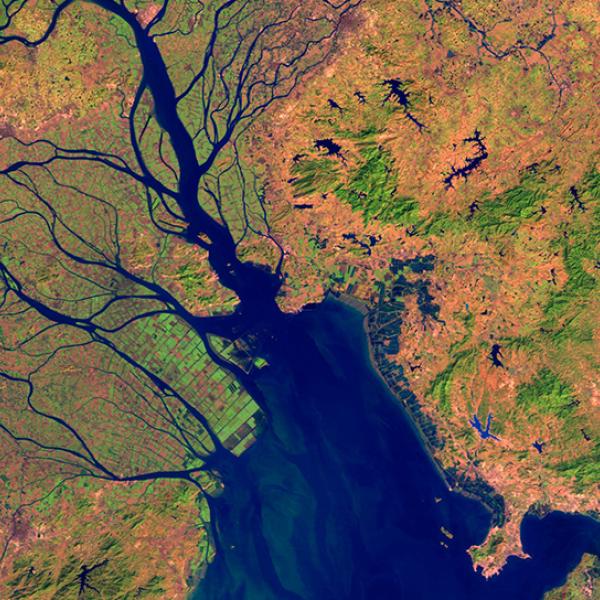Water, snow, and ice are necessary for sustaining life on Earth and help connect the planet's systems. The terrestrial hydrosphere includes water on the land surface and underground in the form of lakes, rivers, and groundwater along with total water storage. NASA tracks nearly every aspect of the water cycle — where precipitation is falling, where snow and ice are melting, the amount of water soaking into the soil, how water moves in rivers and lakes, how it's taken up by plants and used by animals, and the amount of water evaporating back into the atmosphere.
Data collected by NASA’s Earth-observing instruments provide information on the terrestrial hydrosphere including watershed extent, water quality, changes in surface and groundwater, and water surface elevation. In addition, NASA hydrospheric model data provide information on runoff and evapotranspiration.
Our data provide information about many aspects of snow and ice development and processes, ground and surface water quality and chemistry, and the inflow and outflow of water from a region through rainfall, evaporation, runoff, seepage, and other means.
Terrestrial Hydrosphere Subtopics

Latest Terrestrial Hydrosphere News
Join Our Community of NASA Data Users
While NASA data are openly available without restriction, an Earthdata Login is required to download data and to use some tools with full functionality.
Learn About the Benefits of Earthdata LoginFrequently Asked Questions
Earthdata Forum
Our online forum provides a space for users to browse thousands of FAQs about research needs, data, and data applications. You can also submit new questions for our experts to answer.
Submit Questions to Earthdata Forumand View Expert Responses

